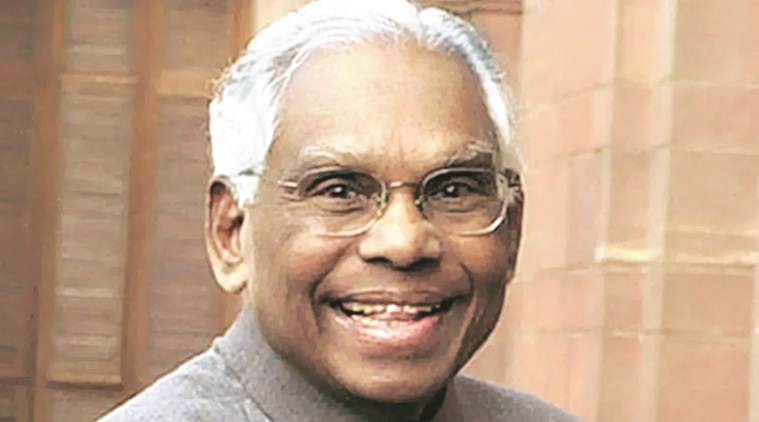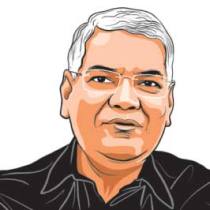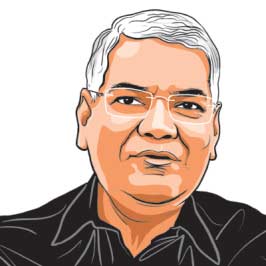Republic’s Sentinel
President Narayanan’s idea of India centred on sanctity of constitutional values

President Narayanan’s was a refreshing voice of sanity that refuted the theory of clash of civilisations
Last Friday (November 9) marked the 13th death anniversary of former President of India, K R Narayanan. An outstanding scholar and a former vice-chancellor of JNU, he has been hailed as a great president. However, the present ruling dispensation consciously ignored him.
His legacy in defending the idea of India, the Constitution, secularism and promoting scientific humanism has immense significance in our times. His idea of India, which animated his life and work, is in total contrast to Hindutva — a divisive, communal and fascist ideology. Hindutva seeks to polarise people in a calculated manner. It seeks the construction of a temple at the site of the Babri mosque, which was demolished. It recalls the dangerous theory of clash of civilisations advocated by Samuel Huntington, who flagged perpetual conflicts triggered by faultlines of religions and civilisations.The Hindutva forces want India to be a theatre where civilisations clash.
President Narayanan’s was a refreshing voice of sanity that refuted the theory of clash of civilisations. In his Maulana Azad Memorial Lecture, he argued that civilisations never clash, but barbarians do. He said civilisations meet and their meeting ground becomes a confluence of ideas, values and commonalities of creeds. In these trying times, in Narayanan’s words, marked by the upsurge of a counter-revolution, a confluential approach is a categorical imperative.
The President of our Republic takes the oath to preserve, protect and defend the Constitution and the law and devote himself or herself to the service of India. President Narayanan adhered to the letter and spirit of the oath and protected the Constitution from review by the then government, headed by Prime Minister Atal Bihari Vajpayee. The speech drafted by the then government for Narayanan to deliver in Parliament had included the suggestion of a review of the Constitution. He had no option but to deliver that speech.
However, Narayanan spoke about the move later by recalling the words of the first President of India, Rajendra Prasad, who had said the failure to implement the Constitution should not be blamed on the Constitution but on those who failed to implement it. In his eloquent speech on the occasion of the golden jubilee of the Republic, he wondered: “Let us examine if the Constitution has failed us or we have failed the Constitution.” It forced the Vajpayee government to abandon the project to review the Constitution and seek a review of the working of the Constitution.
At the unveiling of the Statue of Unity, Prime Minister Modi highlighted the examples of Hyderabad and Junagarh, kingdoms ruled by Muslim rulers, and stated that without Sardar Patel, an Indian citizen would have needed a visa to travel to those states. When President Narayanan unveiled the majestic statue of Patel in front of the Central Hall of Parliament in 1998, he referred to the refusal of the princely state of Travancore to join the Indian Union. The dewan of Travancore, C P Ramaswamy Iyer, invoked Lord Padmanabha as the repository of sovereignty of that princely state and asserted that the Hindu deity would not be subservient to the sovereignty of India. Patel sarcastically asked the dewan as to how Lord Padmanabha was subjected to British suzerainty.
Narayanan’s speech on Patel taught that the Sardar united India despite challenges posed by princely rulers in the name of faith, be it Islam or Hinduism. In the same speech, he said with sensitivity that building a statue of Sardar Patel would not complete our duty to him; Patel would have expected us to affirm our Indianness without reducing it to narrow categories.
Narayanan would constantly remind that secularism is the basis of India’s unity. He also interpreted secularism as a struggle for women’s rights and dignity. It has particular significance at a time when bigotry and sectarianism in the name of faith is narrowing the space for women who face assault and harassment in all spheres. His description of B R Ambedkar as a compassionate rebel and his approach to integrate the vision of Mahatma Gandhi, Jawaharlal Nehru and Ambedkar for nation-building underlined his confluential approach.
The New Year card he issued on January 1, 2000, was designed on his instructions and its inner cover carried a photograph of Albert Einstein with Jawaharlal Nehru. It was accompanied by a quotation of Nehru that said in future, there would be an alliance of science and humanism out of which would emerge scientific humanism. Raja is a Rajya Sabha MP and national secretary, CPI. Sahu served President Narayanan as officer on special duty and press secretary
For all the latest Opinion News, download Indian Express App
More From D. Raja
- Of Lions And DogsIf the RSS chief had cared to read the speeches of Vivekananda, he would have found that the swami had used the word lion in…
- The Freedom We Long ForSocial empowerment remains a distant dream for millions..
- House Under SiegeBy undermining Parliament, government is curtailing the role of the Opposition..







































No hay comentarios:
Publicar un comentario